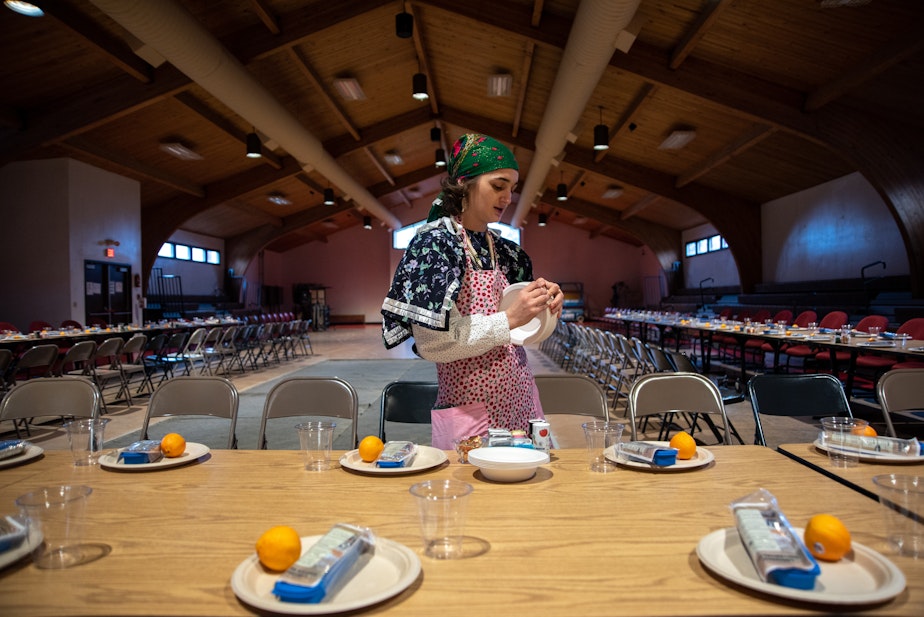Celebrating the day ‘the sun turns around’ in the Pacific Northwest

Each December, Native tribes throughout the Pacific Northwest mark the winter solstice with what’s known as “Indian New Year.”
The festivities include a feast commemorating the shortest daylight of the year, the return of longer days, and, eventually, springtime harvests.
The winter solstice — Dec. 21 — is the shortest daylight of the year. For some Native tribes in the Pacific Northwest, it's known as the day "the sun turns around," and is a time of celebration.
"There was a massive grill with salmon, there was wild meat along with servings of chokecherries and huckleberries," said reporter Anna King, who recently attended the Indian New Year celebration with the Confederated Tribes of the Umatilla Indian Reservation.
The festivities were held at the confederated tribes' longhouse in Mission, Oregon, just across the Washinton-Oregon border. Around 200 people gathered for food and dance, and attendees were dressed in wing dresses, ribbon skirts, buckskins, and beadwork.
“My two boys that do have long hair, I am usually the only one that braids their hair,” said Kola Shippentower as she braided her son's hair. “Being their mom, our boys’ hair is really special and so, with every braid, I usually say a prayer for them every morning as they go out in their day, whether to school or whatever the case may be. But for tonight, it’s preparing for the Indian New Year.”
On a grill outside, traditional dishes like salmon, deer, and buffalo meatloaf were prepped alongside nontraditional dishes of frybread and cakes.
"It's very humbling work," said Trinette Minthorn as she dashed through the kitchen. "It's just exciting to be a part of the big picture, to help do our little part that we can, and be food gatherers for our community."
As each dish was ready, bowls were taken to the longhouse. After everyone gathered for the meal, Armand Minthorn, the tribes' spiritual leader, called out the names of traditional foods before everyone forks a respective bite off their plate.
Later, a dance circle formed on the clay wash at the center of the longhouse, and attendees began slowly moving counterclockwise.
"Even those elders who had stayed on the sidelines for a little while — because it's very hard work to do this dancing and to be in the center of the wash — they even came into the wash and started to dance as well," King said.
The ceremony offered auspicious prayers for the return of springtime harvests in the coming year.
"It makes us closer... it can show us that the person to my right, I have their back. I support them," Minthorn said. "As we go around in this direction, it's the same way the Earth turns. And we turn as well, as we go around. We recognize this land — it's always moving."
Listen to the full Soundside story by clicking "play" on the audio button at the top of this story.
You can read Anna King's full story for the Northwest News Network here.



